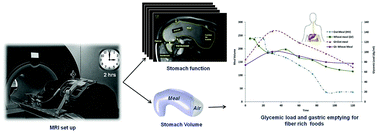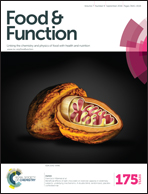The glycemic response to fibre rich foods and their relationship with gastric emptying and motor functions: an MRI study
Abstract
The chief motor functions of human stomach, namely receiving, storing, mixing and emptying, influence the absorption of ingested food and hence determine the glycemic response to the meal. However, among these functions, the gastric emptying pattern of the stomach is essentially regulated by the meal characteristics such as particle size, volume, nutrient composition and viscosity. Understanding the complex relationship between the stomach motor functions and the physicochemical characteristics of meal on glycemic control needs more attention in the formulation of functional foods. Hence, the objective of this study is to employ the magnetic resonance imaging (MRI) technique in ten healthy human volunteers to elucidate the relationship between the motor functions of the stomach and the glycemic response to fibre rich foods. For this, wheat and oat based breakfast meals were selected as fibre rich foods with low (0.042 Pa s) and high (0.266 Pa s) viscosity, respectively. Although wheat meal had a lower viscosity compared to oatmeal, the gastric emptying was found to be delayed for the former due to its high caloric density. This was reflected in the glycemic response as well, with wheat meal having a lower area under the curve (AUC) value than oatmeal. The antral contraction frequency is significantly reduced (P < 0.05) with delayed gastric emptying in the case of high nutrient wheat meal. Overall, the study demonstrated the synergistic effect of gastric emptying, stomach motor functions and physicochemical characteristics of food on the glycemic response to a meal. This information will aid in the development of functional foods with specific end applications.


 Please wait while we load your content...
Please wait while we load your content...